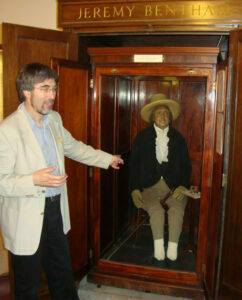When a mother is unable to deliver a baby naturally, she is often rushed or, if trouble was foreseen, booked into theatre for a Caesarean section. A Caesarean section is a surgical procedure where the baby is removed from the mother’s womb through a cut in the lower abdomen. The name for the operation has been connected to Roman dictator Julius Caesar since the first century. Historically, the reason that it is named after the Roman general, senator and dictator for life Julius Caesar is because legend says he entered this world in that fashion. But was Julius Caesar born by Caesarean section?
Was Julius Caesar born by Caesarean section?
In short, no. We have been misled for nearly 2000 years, and we have one man to thank. Pliny the Elder.
Pliny the Elder was a first century AD Roman writer, philosopher, army and naval leader, and also a person friend of Emperor Vespasian (17 November 9 – 23 June 79). So here we can identify the first problem with the naming of caesarean sections. Pliny the Elder walked this earth from AD 23 – August 25, AD 79. Julius Caesar died 15 March 44 BC. That’s a huge difference in time. It would be akin to someone today writing about events 100 years ago with flimsy information and unreliable recollections. That’s not to say the information wasn’t reliable, but we have only his word to go by and no one else’s. But there’s more to this part of the story.
Pliny the Elder never said that Julius Caesar was born by Caesarean, what he did say was that his name came from an ancestor who was born by Caesarean section. Furthermore he said the name came from the word caesum which meant cut out.
Now things are looking flimsy, but we can’t yet completely rule out that Julius Caesar was born by Caesarean section… Yet. Today the procedure is as safe as it will probably ever be, especially if you are in a modern first world hospital. The tools, procedures and sanitation have made the operation relatively safe. But it hasn’t always been that way. Even as recently as the mid 19th century, a mother who underwent such an operation had a 75 percent chance of dying due to hemorrhaging, shock or infection. And that’s in a time when things were slowly beginning to improve.
Wind the clock back 2000 years. The instruments used, and methods employed were to say the least, primitive. The Romans had no knowledge on how to close the gaping would left behind after the birth of the baby. But that was the least of their concern. They only had to worry about that if the mother hadn’t bled to death beforehand. If the mother had survived all of that she would have surely died from infection. It was because of this that Caesarean sections were only performed on mothers who had already died, or were about to die during childbirth. And Julius Caesar’s own mother lived for many years after the Roman leaders birth.
If there’s anyone here still saying that it could be possible that his mother delivered him by Caesarean section and lived to tell the tale, we’re afraid not. The first successful Caesarean section where the mother survived took place around 1500 by a Swiss pig gelder. The success of this operation served as inspiration for others.
Lets put a nail into this coffin shall we? Remember when we said Pliny the Elder suggested the name Caesar came from caesum which meant cut out? Julius Caesar himself disputed this. According to Caesar the word originated from a Moorish word for elephant, caesai. Apparently the first Caesar had killed an elephant in battle and had adopted the name after the monumental event.
Regardless that Julius Caesar was not born by Caesarean section, thanks to the writing of Pliny the Elder he will forever be connected to the surgical procedure, because it is his namesake after all.








